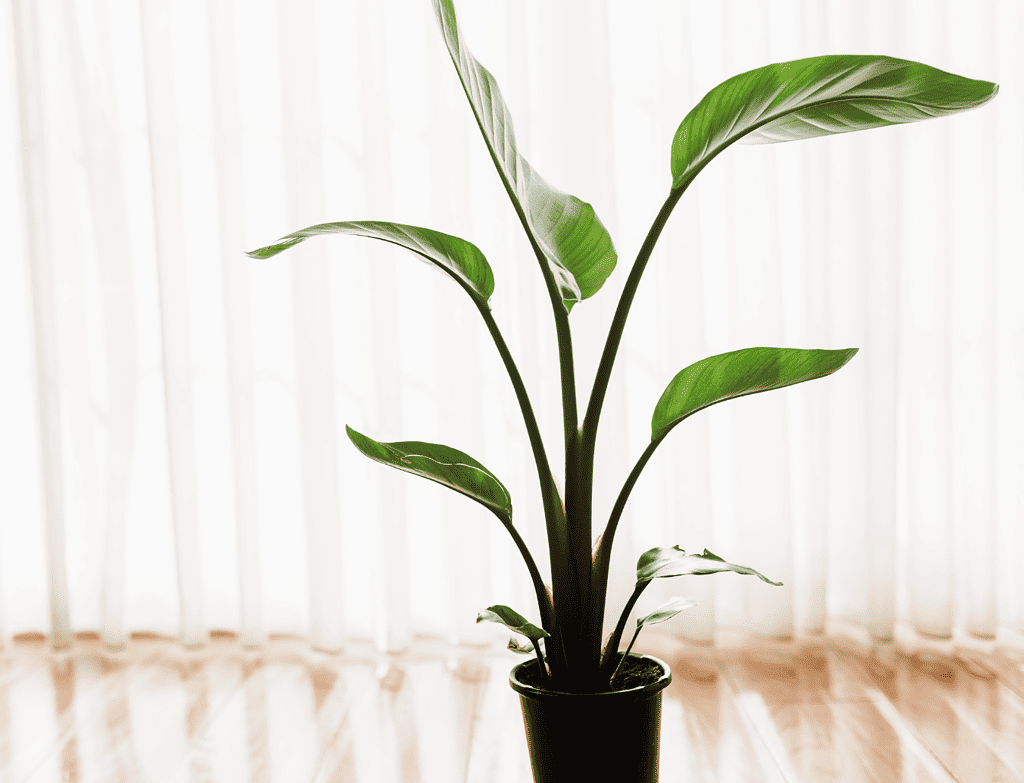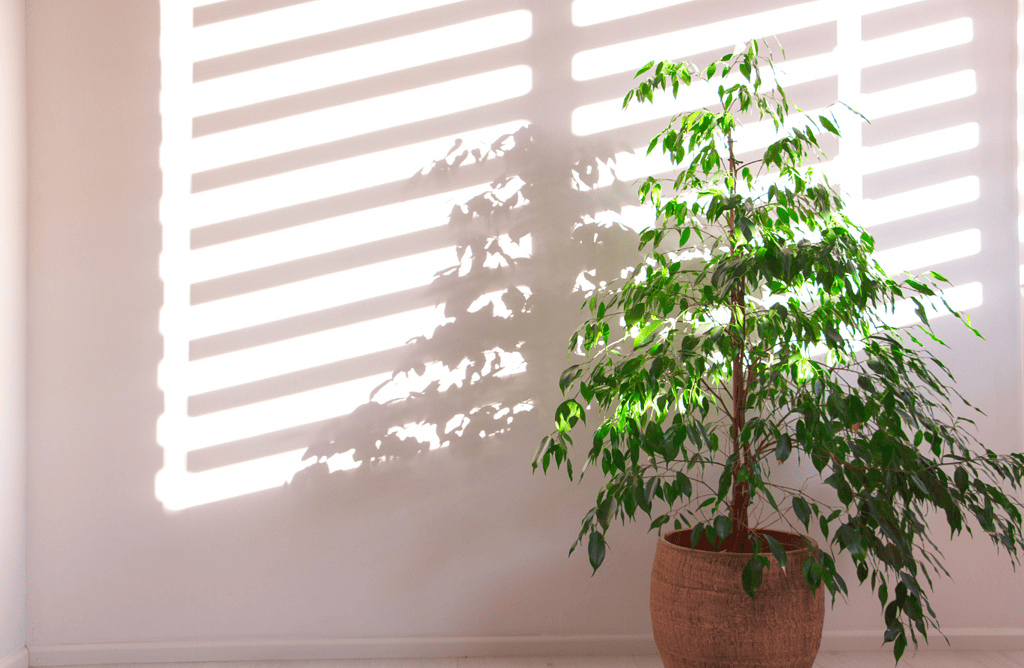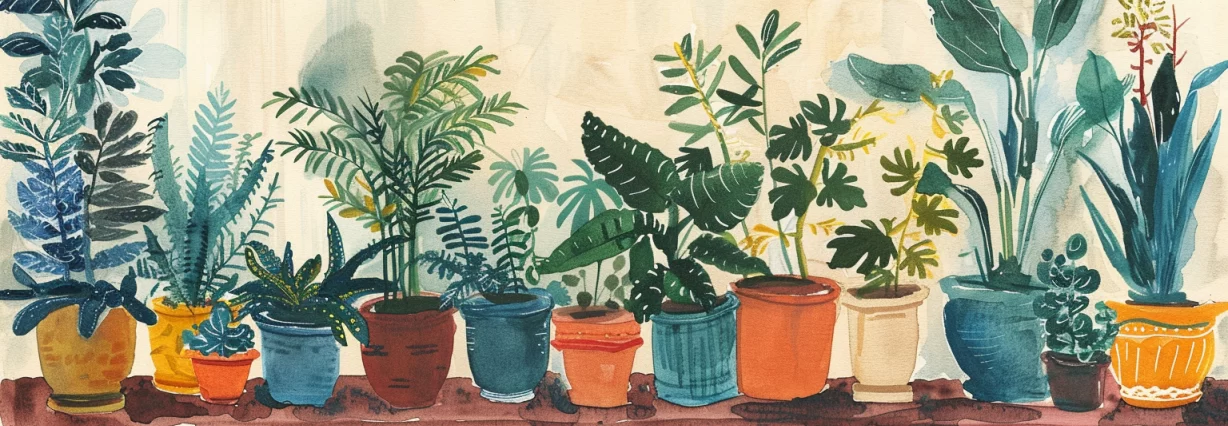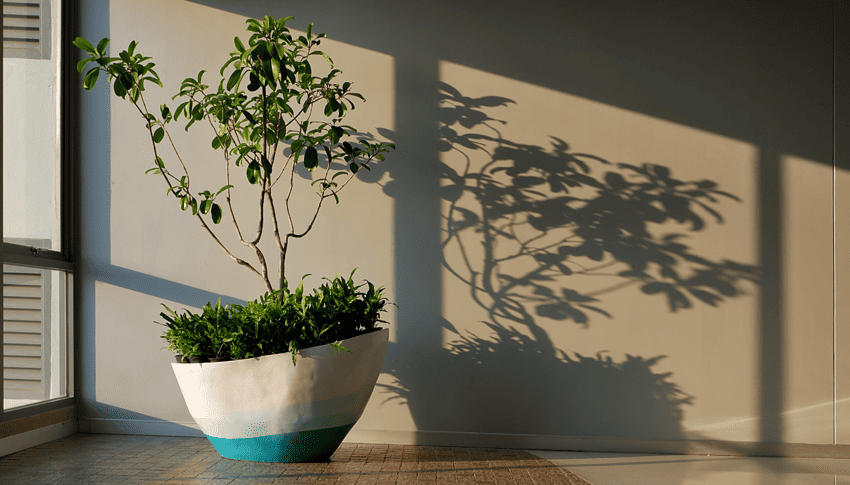Houseplants are a great way to add life and color to any indoor space. However, not all houseplants are created equal regarding their light requirements. Understanding the lighting needs of different plants is crucial in selecting the right ones for your home or office. In this article, we will provide tips on how to select houseplants based on light conditions.
The amount of light a plant needs can vary greatly depending on the species. Some plants thrive in bright, direct sunlight, while others prefer low-light conditions. It is essential to consider the natural lighting in your space when selecting houseplants. Factors such as the direction your windows face and the amount of shade provided by nearby buildings or trees can impact the amount of light that enters your space. By selecting plants that match the lighting conditions in your home or office, you can ensure that they will thrive and add beauty to your space.
Understanding Light Conditions
When it comes to houseplant selection, understanding light conditions is crucial. Light is one of the most critical factors in a plant’s growth and health. Different plants have different light requirements, and providing the right light is essential for survival.
Direct sun is the most intense type of light, and it can harm many plants. On the other hand, indirect light is less intense and is suitable for most houseplants. Bright indirect sunlight is ideal for plants that require more light than average but not as much as direct sun.

Light levels can vary depending on the window’s direction and the time of day. South-facing windows receive the most light, followed by west-facing and east-facing windows. North-facing windows receive the least amount of light. It is important to note that the amount of light a plant gets can also be affected by exterior obstructions, such as nearby buildings or trees.
Blinds or curtains can be used to control the amount of light that enters a room. During seasonal changes, adjusting the amount of light a plant receives may be necessary by moving it to a different location or adjusting the blinds or curtains.

When selecting a houseplant, it is crucial to consider the window direction and the amount of light the plant will receive. South / west-facing rooms are ideal for plants that require bright, direct sunlight, while north-facing rooms are better suited for plants that require less light. East-facing rooms receive bright, indirect light in the morning and are ideal for most plants.
In summary, understanding light conditions is essential for selecting the right houseplants for your home. By considering the window direction, light levels, and seasonal changes, you can give your plants the optimal amount of light for their growth and health.
Houseplants for Low Light
Low-light conditions can be a challenge for plant lovers, but luckily, plenty of houseplants can thrive in these conditions. Here are some of the best houseplants for low light:
- Ferns: Ferns are great for low-light conditions and come in many varieties. Some popular ferns include the Bird’s Nest Fern and the Boston Fern. These plants prefer moderate indirect light and should be kept moist.
- Dracaena: Dracaena plants are great for low-light conditions and come in many varieties. Some popular Dracaena plants include the Dragon Tree and the Corn Plant. These plants prefer moderate indirect light and should be watered when the soil is dry.
- Peace Lily: Peace Lilies are great for low-light conditions and are known for their beautiful white flowers. These plants prefer moderate indirect light and should be watered when the soil is dry.
- Snake Plant: Snake Plants are great for low-light conditions and are known for their striking foliage. These plants are easy to care for and have limited watering and light requirements.
- Pothos: Pothos plants are great for low-light conditions and are known for their trailing vines. These plants prefer moderate indirect light and should be watered when the soil is dry to the touch.
- ZZ Plant: ZZ Plants are great for low-light conditions and are known for their glossy leaves. These plants are easy to care for and have limited watering and light requirements.
- Spathiphyllum (Peace Lily): Spathiphyllum plants are great for low-light conditions and are known for their beautiful white flowers. These plants prefer moderate indirect light and should be watered when the soil is dry to the touch.
- Alocasia: Alocasia plants are great for low-light conditions and are known for their large, tropical leaves. These plants prefer moderate indirect light and should be watered when the soil is dry to the touch.
- Ivy: Ivy plants are great for low-light conditions and are known for their trailing vines. These plants prefer moderate indirect light and should be watered when the soil is dry to the touch.
- Pilea: Pilea plants are great for low-light conditions and are known for their unique round leaves. These plants prefer moderate indirect light and should be watered when the soil is dry to the touch.
- Calathea: Calathea plants are great for low-light conditions and are known for their beautiful foliage. These plants prefer moderate indirect light and should be watered when the soil is dry to the touch.
- Dieffenbachia: Dieffenbachia plants are great for low-light conditions and are known for their striking foliage. These plants prefer moderate indirect light and should be watered when the soil is dry to the touch.
- Philodendron: Philodendron plants are great for low-light conditions and are known for trailing vines. These plants prefer moderate indirect light and should be watered when the soil is dry to the touch.
- Spider Plant: Spider Plants are great for low-light conditions and are known for their trailing vines. These plants prefer moderate indirect light and should be watered when the soil is dry to the touch.
- Aspidistra (Cast Iron Plant): Aspidistra plants are great for low-light conditions and are known for their hardiness. These plants prefer moderate indirect light and should be watered when the soil is dry to the touch.
- Maranta: Maranta plants are great for low-light conditions and are known for their beautiful foliage. These plants prefer moderate indirect light and should be watered when the soil is dry to the touch.
- Rhapis Palm: Rhapis Palm plants are great for low-light conditions and are known for their palm-like appearance. These plants prefer moderate indirect light and should be watered when the soil is dry to the touch.

In conclusion, many houseplants can thrive in low-light conditions. When selecting a houseplant for low-light conditions, it’s important to consider its light and watering requirements. With the right care, these plants can add beauty and life to any room.
Houseplants for Medium Light
Indoor plants that thrive in medium-light conditions are perfect for those with a north-facing window or a room with moderate lighting. These plants need bright light, not direct sunlight, and can be placed near a west or southeast window. Here are some common houseplants that do well in medium light:
- Sansevieria: Snake plants are one of the easiest plants to care for and can tolerate low to moderate light. They are perfect for beginners and can go weeks without water.
- Cactus: These plants are known for their ability to thrive in bright light, but they can also do well in moderate light. They are low maintenance and only need to be watered once a month.
- Fiddle Leaf Fig: These plants have become popular in recent years due to their large, glossy leaves. They need bright, indirect light but can also tolerate moderate light. They should be watered once a week.
- Aloe Vera: This plant is not only beautiful but also has medicinal properties. It needs bright, indirect light but can grow in moderate light. It should be watered once a week.
- Jade: This succulent is easy to care for and can tolerate low to moderate light. It only needs to be watered once every two weeks.
- Kentia Palm: These plants add a tropical touch to any room. They need bright, indirect light but can grow in moderate light. They should be watered once a week.
- Boston Fern: These plants are great for adding greenery to a room. They need bright, indirect light but can grow in moderate light. They should be watered once a week.
- Peperomia: These plants have become popular due to their unique foliage. They need bright, indirect light but can grow in moderate light. They should be watered once a week.
- Aglaonema: These plants come in various colors and are easy to care for. They need bright, indirect light but can grow in moderate light. They should be watered once a week.
When selecting plants for medium light conditions, it’s important to consider the lighting in the room and the plant’s specific care needs. You can add some greenery to your home by choosing the right plants, even in rooms with moderate lighting.

Houseplants for Bright Light
Bright light is essential for many houseplants to thrive. If you have a south or west-facing window that receives a lot of direct sunlight, you have an ideal location for growing plants that require bright light.
Some popular houseplants that thrive in bright light conditions include succulents, anthurium, monstera, bird of paradise, crown of thorns, geranium, hibiscus, thyme, Christmas cactus, money tree, orchids, begonia, and bromeliads.
It’s important to note that while these plants can handle bright light, they may still experience leaf scorch or sunburn if exposed to too much direct sunlight. Consider using sheer curtains or blinds to filter the light to prevent this.
Bright light is crucial for photosynthesis, the process by which plants convert light into energy. As a result, plants that receive sufficient bright light are more likely to produce flowers and fruit.
In summary, if you have a south or west-facing window that receives a lot of direct sunlight, you have an ideal location for growing a wide variety of houseplants that require bright light. Just monitor the light exposure to prevent leaf scorch or sunburn, and enjoy the benefits of thriving plants that produce beautiful flowers and fruit.

Adjusting Light Conditions for Houseplants
Sometimes, even with the best intentions, providing the ideal light conditions for your houseplants can be challenging. Fortunately, there are several ways to adjust light conditions to help your plants thrive.
Moving Plants
One of the easiest ways to adjust light conditions for houseplants is to move them to a different location. If a plant is not receiving enough light, try moving it closer to a window or into a brighter room. On the other hand, if a plant is getting too much direct sunlight, move it to a shadier spot or use blinds or curtains to filter the light.
Supplemental Light
If natural light is not sufficient, consider using supplemental light. Grow lights can be an excellent option for providing additional light to houseplants. Many different types of grow lights are available, including fluorescent, LED, and high-intensity discharge (HID) lights. Before purchasing grow lights, research the specific light requirements of your plants and choose a light that will provide the appropriate spectrum of light.

Artificial Lighting
Artificial lighting can also be used to adjust light conditions for houseplants. While natural light is always best, artificial lighting can be a good option for plants that do not receive enough natural light. For example, LED bulbs can mimic natural light and provide the necessary spectrum of light for plants to grow.
Using Blinds
Blinds and curtains can be used to adjust light conditions for houseplants. If a plant receives too much direct sunlight, close the blinds or curtains to filter the light. Similarly, if a plant is not receiving enough light, open the blinds or curtains to allow more light in.
In summary, adjusting light conditions for houseplants can be done in several ways, including moving plants, using supplemental light, using artificial lighting, and using blinds or curtains to filter light. Houseplants can thrive and add beauty to any home by providing the appropriate light conditions.

Watering Houseplants Based on Light Conditions
Proper watering is crucial for the health of houseplants. The amount and frequency of watering depend on various factors, including the light conditions. Here are some tips on watering houseplants based on the light conditions:
Low Light Conditions
In low light conditions, houseplants tend to grow slower, and their water requirements are lower. Overwatering can lead to root rot, so letting the soil dry out slightly between watering is essential. The best way to check if a plant needs water is to stick your finger in the ground. If the top inch of soil is dry, it’s time to water. Use a watering can with a long spout to water the soil directly, avoiding the leaves. Water the plant until the water drains out of the bottom of the pot, and discard any excess water in the saucer.
Medium Light Conditions
Houseplants in medium-light conditions require more water than those in low-light conditions. The soil should be kept evenly moist but not waterlogged. Water the plant when the top inch of soil is dry. Use a watering can with a long spout to water the soil directly. Avoid getting water on the leaves, as it can lead to fungal diseases. If the plant is in a pot without drainage holes, be careful not to overwater, as the excess water can accumulate in the bottom and lead to root rot.
High Light Conditions
Houseplants in high-light conditions require more frequent watering than those in low or medium-light conditions. The soil should be kept evenly moist but not waterlogged. Water the plant when the top inch of soil is dry. Use a watering can with a long spout to water the soil directly. In high-light conditions, the soil can dry out quickly, so it’s essential to monitor the plant’s water needs regularly. If the leaves start to wilt, it’s a sign that the plant needs water.
In summary, the key to watering houseplants based on light conditions is to monitor the soil moisture and adjust the watering frequency accordingly. Overwatering can lead to root rot, while underwatering can cause the plant to wilt and die. By following these tips, you can keep your houseplants healthy and thriving.
Understanding the Impact of Light on Plant Growth
Light is a crucial factor in plant growth and development. It is essential for photosynthesis, the process by which plants convert light energy into chemical energy to fuel their growth. Without adequate light, plants cannot produce the energy they need to grow and thrive.
Different types of plants have different light requirements. Some plants, such as cacti, can tolerate bright, direct sunlight, while others, such as ferns, prefer lower light levels. Understanding the light requirements of the plants you are growing is essential for their health and well-being.
One of the most significant impacts of light on plant growth is the rate of photosynthesis. Plants require a certain amount of light energy to produce the sugars and carbohydrates they need to grow. When light levels are too low, photosynthesis slows down, and plant growth is stunted. Conversely, when light levels are too high, plants can suffer from sunburn and other damage.
Another important factor to consider is the color of light. Different wavelengths of light have different effects on plant growth and development. For example, blue light promotes vegetative growth, while red light stimulates flowering and fruiting. Understanding the effects of different colors of light can help you select the right lighting for your plants.
In summary, light is a critical factor in plant growth and development. Understanding the light requirements of your plants and providing them with the right amount and type of light can help them thrive. Whether you are growing cacti or ferns, photosynthesis is essential to their health and well-being, and providing them with adequate light is key to supporting their growth.
Frequently Asked Questions
What are some examples of plants that thrive in indirect sunlight?
Some examples of plants that thrive in indirect sunlight include snake plants, pothos, spider plants, and ZZ plants. These plants are great for indoor spaces that do not receive direct sunlight.
What are the light requirements for common houseplants?
The light requirements for common houseplants vary. Some plants, such as succulents, need direct sunlight, while others, like ferns, prefer low-light conditions. It is important to research the light requirements of each plant before purchasing and placing them in your home.
How can I determine if my indoor space has enough light for my plants?
To determine if your indoor space has enough light for your plants, you can use a light meter or a smartphone app that measures light intensity. Alternatively, you can observe the amount of natural light that enters your space throughout the day. If your plants are not receiving enough light, you may need to supplement them with artificial light sources.
What is considered medium light for indoor plants?
Medium-light for indoor plants typically refers to areas that receive bright, indirect light or areas that are within a few feet of a window. Plants that thrive in medium light include peace lilies, Chinese evergreens, and philodendrons.
How far away from a window should I place my indoor plants for bright indirect light?
Plants that require bright indirect light should be placed within a few feet of a window. The exact distance will depend on the intensity of the light and the size of the plant. As a general rule, plants should be placed close enough to the window so that they receive bright, indirect light but not so close that they are exposed to direct sunlight.
What are some examples of indirect light sources for indoor plants?
Indirect light sources for indoor plants include fluorescent lights, LED grow lights and incandescent lights. These lights can be used to supplement natural light or provide light for plants in areas that do not receive natural light. It is important to research the specific light requirements of your plants before selecting an artificial light source.


